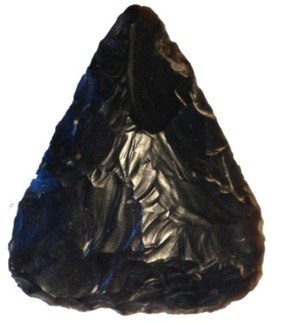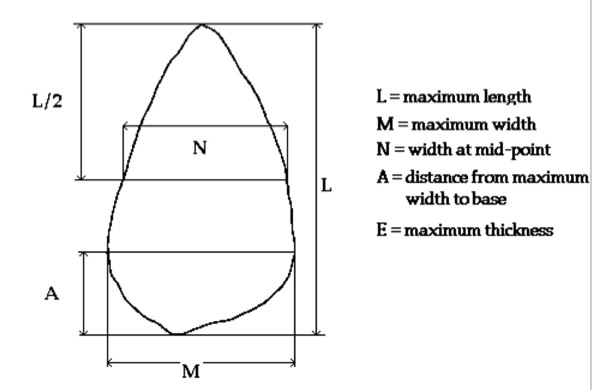
The classification of handaxes is based on their shape (morphology).
This morphology can be quantified with a series of measurements
Ratios are calculated from these measurements.
L/A: L [maximum length] / A [distance from point of maximum width to base] expresses the position of maximum width in relation to the length
N/M x 100: N [width halfway up the axe] / M [maximum width] expresses the roundness of the sides.
M/E: M [maximum width] / E [maximum thickness] expresses the thickness relative to width, or 'refinement' of the axe.
if M/E < 2.35 then axe is THICK
if M/E > 2.35 then axe is THIN
L/M: L [maximum length] / M [maximum width] expresses the elongation of the axe.
examples of how L/M can effect the classification of the hand axe.
an L/M > 1.5 would make a cordiform axe an 'elongated cordiform'
an L/M > 1.5 would make a triangular axe an 'elongated triangular'
an L/M > 1.6 would make a ovate axe a 'limande'
an L/M < 1.3 would make a ovate axe a 'discoid’
